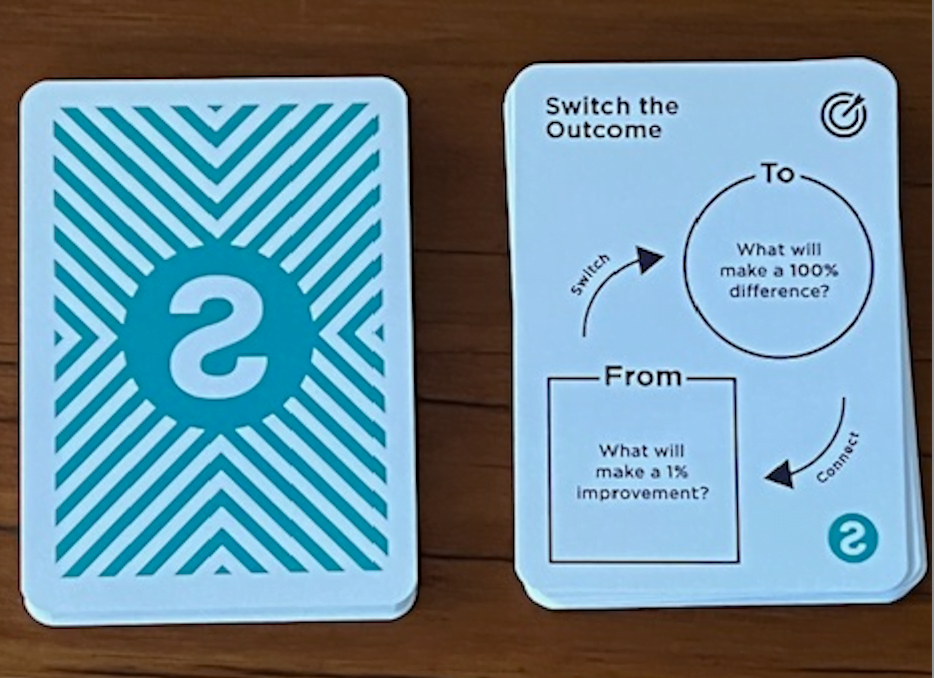My Switch Thinking workshops and courses are principally aimed at helping people to change their thinking so as to be more creative, innovative and develop new growth opportunities.
And of course this is what the sessions did achieve (based on participant feedback).
But another interesting concept kept coming up.
Change.
Team leaders, coaches, trainers and facilitators in particular would talk about how difficult it was to lead and encourage change.
This was somewhat unexpected but given we were talking about change perhaps (on reflection) not so.
When I asked participants why change was so difficult they offered the following:
– Change was presented in their organisation as a binary choice. You either change or don’t change. There was no middle ground or grey. It was like a light switch it was either on or off.
– Change was often seen as an an umbrella description for retrenchments, cost cutting or restructuring. Whatever it was the change was seen as painful.
– Change itself became a top-down process with little or no engagement. It was forced upon people.
– As a result if you queried any of the ‘Changes’ you were labelled change resistant.
– And many participants because of the above offered they suffered from change fatigue.
– Change as presented to many people meant that the approach they had been using for some time was wrong or not valid.
– Change is also presented sometimes as a blanket approach which does not allow for any degree of customisation for individual leaders and their teams.
Based on the above it’s no wonder that many corporate change programs for example have mixed results.
So let’s consider a new approach.
What if, I suggested to my course participants we developed a new concept and language about change?
Why not start thinking about switch as a new way to change?
Perhaps changing the language of change management might offer new possibilities.
I loved the irony of this.
To talk about change in a new might mean to change the word change.
Switch as a new way to change.
Using the word switch and its tools offers a number of advantages.
The most obvious plus is that switch is a new concept that is well not ‘change’.
Sometimes to introduce a new concept you need a new expression e.g. Nudge.
Switch can be temporary. Like you can switch gears in a bike you can switch to a new way of doing something and switch back to the old way.
Being able to switch back often means that people are more willing to take risks for example. If i was learning how to swim i might go in the deep end of a pool if I knew I could switch back to the shallow end.
This brings up another insight.
I found in my doctoral research in to Organisational Creativity that people are more willing to create and innovate if they feel safe.
In a similar way, most people I suspect are more willing to change if they feel safe.
Being able to switch back and forth gives them this feeling of safety. For example, you can ask people what might make a 1% improvement (the safe option) and then ask for some ideas that might make a 100% difference (the changed option).
Hence using the Switch Thinking structure means that any team member can use any of the Switches at any time.
This gives team members and leaders a tool kit of change options rather than this is the new way (like it or lump it).
Being able to switch back and forth can offer new ways to connect the existing process with a different one. This has the benefit of taking what works at the moment with potentially a better way in the future. Think wind surfing (i.e. a combination of surfing and sailing).
Switch is a more empowering way to invite change.
It gives people more agency, control and decision making influence.
Using the Switch Thinking approach is more of a bottom up and team leader led approach.
Teams can decide how much they wish to switch (i.e. change) and hence offers a more customised, adaptable approach.
The other major benefit of a Switch Thinking approach to change is that the main emphasis is on changing your thinking.
Changing your thinking is more immediate, sometimes dramatic and the results can be exponential.
For example,
What is the problem here?
Switch
Where is the opportunity to experiment, learn and grow.
The initial thinking approach frames any challenge as a problem. What has gone wrong? Who is to blame?
The switched way frames a problem as an opportunity which instantly changes (for most people) their energy levels.
This switch in mindset contrasts with the slower behaviour driven approaches which are effective but take time and effort to build a new habit.
In summary:
Switch Thinking is a new way to change.
One that is easier, more empowering, energising and ultimately (i suspect) more successful.
It can be customised for any leader, group or team and can be used anywhere, anytime.
Switch Thinking can be the new way we do things around here.

